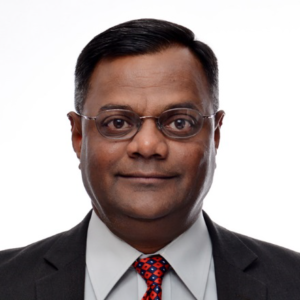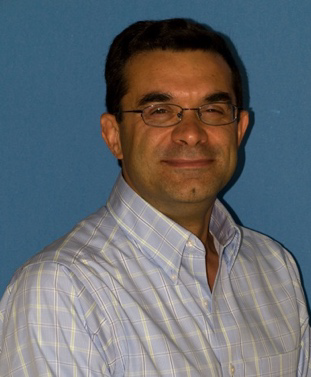IoT and AI Architecture for Humanitarian Services
Date: October 17, 1-5 pm
Abstract
In this 4-hour workshop we discuss potentials of Internet-of-Things (IoT) technologies in addressing humanitarian challenges in developing countries. We explore many examples of IoT applications and possible artificial intelligence use-cases, and benefits such as improving agricultural production by alerting farmers about weather patterns, healthcare by remotely conducting remote diagnosis of diseases.
In the second part, we describe the main IoT building blocks: (1) sensor types and them interfaces, including UART, SPI and I2C; (2) common microcontroller (3) connectivity requirements and wireless technologies such as ZigBee, Wi-Fi, LoRa, Bluetooth Wireless 4 .0 LE, RFID, and NFC in terms of range, bandwidth, and battery life; (4) cloud computing and storage platforms such as AWS, IBM Blue mix, Microsoft Azure, GE Predix, etc. We also elaborate on power harvesting methods and the importance of power management for IoT-based networks and ways to optimize node life-time.
The workshop also covers the fundamentals of AI, algorithm flow diagram and how to create AI software on MCU (device) as well utilize the cloud components.
We conclude the workshop with live demonstration of several IoT-based systems each having different design criteria and power constraints. The audience can interact with the systems and explore their capabilities and limitations.
A few AI demonstration shall be presented on IoT evaluation kit designed using open source hardware and IoT cloud stacks.
Learning Objectives
The primary motivations of the tutorial are as follows:
i) Learn the concept and architecture of IoT and AI work flow.
ii) IoT and AI related protocols.
iii) Wireless technologies used in IoT enabled systems and how AI are the part of IoT systems.
iv) Explanation on IoT domain related to Hardware, Sensors and connectivity protocols.
v) Walking through various connectivity methodologies.
vi) Importance of various IoTcloud platforms and AI implementations.
vii) Creating social awareness with demonstrating various real-time applications
Detailed Description
The tutorial is designed to introduce low cost, reliable and real-time solutions for IoT enabled monitoring and control systems, such as Remote Water Testing, or air quality monitoring systems (as shown below). In today’s world cloud enabled systems are considered as smart systems due to their capability of sensing, data processing, decision making and communicating with the cloud. The participants will learn how sensors are connected to the hardware platform and how the hardware platform fetches data from sensors and pass it to cloud using various connection methodologies. The tutorials also provide the fundamentals of AI and how to implement AI algorithm on open source hardware and software.
Also, the tutorial will introduce various sensors used in monitoring systems, IoT hardware platforms, networking topologies, protocols (CoAP, 6LoWPAN, REST, MQTT, HTTP etc.) and cloud platforms.
Participants will go through few case studies, schematics, design methodologies and infrastructure details. Participants will be proposed to design and execute a real-time parameter Monitoring project based on the learned concepts and principles and expected to complete the project within additional off-time tutorials days.
Audience
Students at all levels (B.Tech. /M.Sc./M.Tech./Ph.D.) or Faculty from reputed academic institutions and technical institutions.
Instructors
 Shivakumar Mathapathi is Adjunct Lecturer at Santa Clara University and Adjunct professor at Sonoma State University. He has over 25 years of experience in product development, design and faculty. Mathapathi is a seasoned technologist, entrepreneur, instructor and practitioner on the Internet of Things (IoT) with extensive experience as lead faculty, lab-practice and mentorship in executing smart city, smart agriculture, assisted living and other IoT related projects. He has designed study programs and academic syllabus for The IoT course, a master’s curriculum (4 units) taught at Santa Clara University and California Polytechnic State University. He led capstone design project at Cal Poly (part of California Stata University) to design and develop IoT cloud platform needed for smart city.
Shivakumar Mathapathi is Adjunct Lecturer at Santa Clara University and Adjunct professor at Sonoma State University. He has over 25 years of experience in product development, design and faculty. Mathapathi is a seasoned technologist, entrepreneur, instructor and practitioner on the Internet of Things (IoT) with extensive experience as lead faculty, lab-practice and mentorship in executing smart city, smart agriculture, assisted living and other IoT related projects. He has designed study programs and academic syllabus for The IoT course, a master’s curriculum (4 units) taught at Santa Clara University and California Polytechnic State University. He led capstone design project at Cal Poly (part of California Stata University) to design and develop IoT cloud platform needed for smart city.
Mr. Mathapathi has contributed to build the ecosystem and establish innovation pathways for the OpenIoT project, a blueprint and awarded Open Source project in the Internet of Things for smart Cities sponsored by the European commission. He is focused on academic research and Innovation and he is involved in architecture design and development of smart city projects such as smart trash monitoring, Flood monitoring and smart trail traffic monitoring –designed for the City of San Luis Obispo. California.
Mr. Mathapathi is also a team lead for Global City team Challenge (GCTC) project hosted by the National Institute of Standards and technology (NIST) under the Department of Commerce, USA. GCTC team comprises of Sonoma State University, Santa Clara University, City of San Leandro, City of Galway (Ireland) and City of Rohnert Park, CA.
Mr. Mathapathi has designed IoT development kit (patent file pending). The Kit enables design proof of concept (PoC) for IoT application. The kit consists of various sensors viz Temperature, Humidity, Air quality (CO2), Light, pressure and Gas sensors connected to AWS (Amazon) IoT cloud platform.
 Farid Farahmand received his PhD in 2005 and is currently the Chair of the Engineering Science Department (Electrical Engineering) at Sonoma State University in California, U.S.A. He is also the director of Advanced Internet Technology in the Interests of Society Laboratory. Prior to his academic position at Sonoma State, Dr. Farahmand worked as the research scientist at Alcatel-Lucent Corporate Research and was involved in development of terabit optical routers. Farid has received multiple Fulbright Fellowships, and he has been a Fulbright Scholar since 2014. Dr. Farahmand holds multiple international patents, numerous reference conference articles and journal publications, and several book chapters, on the subjects of wireless communications, Internet-of-Things, optical networking, green networking, and delay tolerant networks. He has also authored many educational papers focusing on eLearning and Active Learning in classrooms. Farid is actively involved in many conferences and serves as the reviewer and coeditor to a number of technical conferences and journals. He is a member of IEEE, ASEE, and Engineers Without Borders-USA.
Farid Farahmand received his PhD in 2005 and is currently the Chair of the Engineering Science Department (Electrical Engineering) at Sonoma State University in California, U.S.A. He is also the director of Advanced Internet Technology in the Interests of Society Laboratory. Prior to his academic position at Sonoma State, Dr. Farahmand worked as the research scientist at Alcatel-Lucent Corporate Research and was involved in development of terabit optical routers. Farid has received multiple Fulbright Fellowships, and he has been a Fulbright Scholar since 2014. Dr. Farahmand holds multiple international patents, numerous reference conference articles and journal publications, and several book chapters, on the subjects of wireless communications, Internet-of-Things, optical networking, green networking, and delay tolerant networks. He has also authored many educational papers focusing on eLearning and Active Learning in classrooms. Farid is actively involved in many conferences and serves as the reviewer and coeditor to a number of technical conferences and journals. He is a member of IEEE, ASEE, and Engineers Without Borders-USA.




